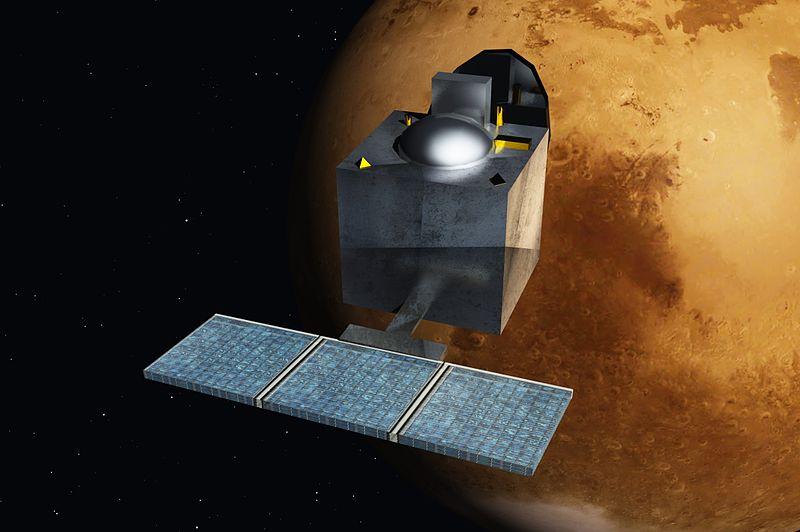Mangalyaan Moonshine

Mars has two moons orbiting it. Recently, a newborn third satellite joined them—Mangalyaan from India.
ISRO, the national space agency, has shared small footage on its social networking site captioned: “The larger of the two Martian moons, Phobos, is seen travelling west to east over Mars in its typical orbit.”
For 20 days, ISRO’s Mars Orbiter has been shooting the other two satellites. On Tuesday it sent pictures of Phobos — the larger one. Phobos has hundreds of craters of varying sizes that can be seen from the Viking-1 orbiter.
The images were taken from a height of 66,275 km above the Red Planet. Phobos, along with another natural satellite of Mars, Deimos, was discovered in 1877. Phobos, which is 27 by 22 by 18 km in diameter orbits the red planet three times a day.
Phobos is getting closer to Mars at a rate of 1.8 m every hundred years. It is expected to crash into the red planet in 50 million years or break up into a ring, according to the US national space agency.
But don’t worry even if the secret is out of the bag on your social media page. You won’t be around then—hopefully.
Image Credit: Nesnad / CC BY-SA 4.0, via Wikimedia Commons
You may also like
Image Reference: https://commons.wikimedia.org/wiki/File:Mars_Orbiter_Mission_-_India_-_ArtistsConcept.jpg
Recent Posts
- From frozen shots to fast funding: Zenma Coffee’s breakthroughZenma officially launched in November 2023. Soon, its frozen espresso shots appeared on Blinkit and Zepto.
- India prepares for a major tax reset from April 2026According to officials, the focus is on reducing notices, speeding up refunds, and cutting paperwork.
- Bihar youth builds electric jeep that runs 100 km on a single chargeMurshid previously worked at different mechanic shops after completing his education.
- From frozen shots to fast funding: Zenma Coffee’s breakthrough
What’s new at WeRIndia.com
News from 700+ sources
-
National shooting coach accused of sexually harassing minor in Faridabad; suspended by NRAI
-
SEBI alleges Bank of America breached insider trading rules in 2024 deal
-
China hacked email systems of US congressional committee staff: Report
-
China asks tech firms to halt orders for Nvidia’s H200 chips: Report
-
OPPO Reno15 Pro price at 50,000 discount: How to get the 200-MP flagship camera phone for under 20,000?
-
Sabalenka to skip events in 2026 to prioritise her health
-
WeRIndia – A News Aggregator
Visit werindia.com for all types of National | Business | World | Politics | Entertainment | Health related news and much more..










Leave a Reply